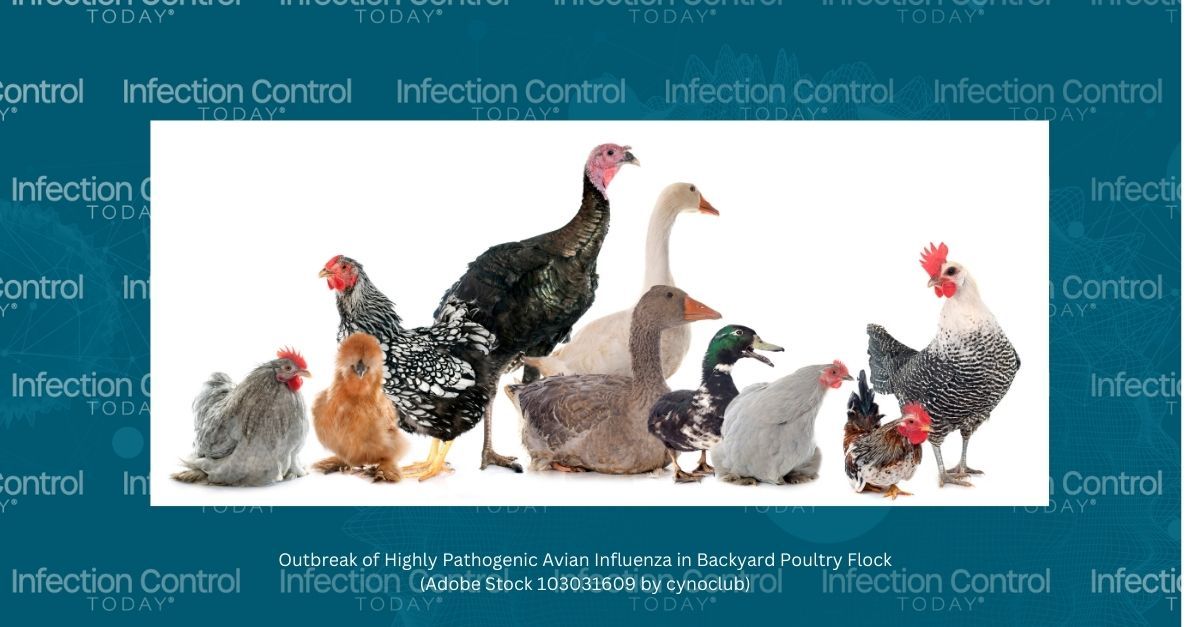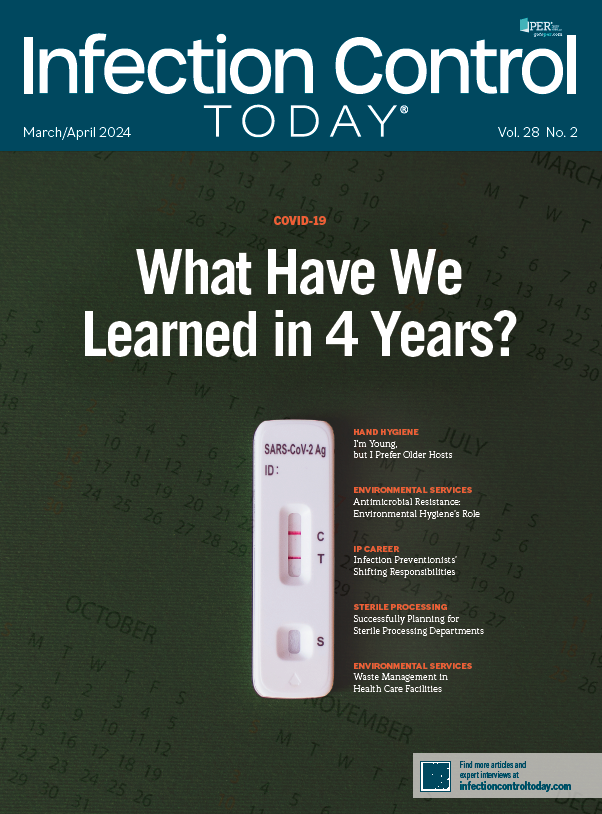Highly Pathogenic Avian Influenza Detected in West Virginia Backyard Flock
Health care workers urged to review biosecurity as USDA confirms first HPAI case since 2022 in domestic birds during ongoing outbreak.
Outbreak of Highly Pathogenic Avian Influenza Found in Backyard Flock
IAdobe Stock 103031609 by cynoclub)

The USDA's Animal and Plant Health Inspection Service (APHIS) has confirmed highly pathogenic avian influenza (HPAI) in a noncommercial flock in Kanawha County, West Virginia. Here's what to know.
It has been confirmed that a backyard flock located in Kanawha County, West Virginia, has contracted HPAI, which marks the first case of this outbreak in domestic birds since February 2022. The samples taken from the flock were tested at the Moorefield Animal Health Diagnostic Laboratory, which is a part of the National Animal Health Laboratory Network, and then further verified at the APHIS National Veterinary Services Laboratories located in Ames, Iowa.
In the US, as of February 21, 2024, 8985 wild birds and 81,924,696 poultry in 48 states with poultry outbreaks have been affected by HPAI. One person died in April 2022. No person-to-person spread has been confirmed.
Collaborating with West Virginia's state animal health officials, APHIS is working on a joint incident response. The CDC states that the public health risk from avian influenza in birds remains low. As a reminder, it is recommended to handle and cook all poultry and eggs to an internal temperature of 165 ˚F for food safety.
Federal and state authorities are implementing additional monitoring and testing measures in the vicinity of the affected flock, as part of their existing response plans for avian influenza outbreaks. The United States boasts one of the most comprehensive avian influenza surveillance programs globally, which actively tracks commercial poultry operations, live bird markets, and migratory wild bird populations.
From backyard to commercial poultry, it's advised to review biosecurity practices to ensure bird health. There are several ways that infectious diseases can be introduced to a farm, but the greatest risk usually comes from bringing new animals or animals that have been in contact with others. When new genetics are added to the herd, it is often through the introduction of new herd and flock sires or replacement females. APHIS offers resources on biosecurity, including videos, checklists, and a toolkit.
The USDA will inform the World Organisation for Animal Health (WOAH) and international trading partners about the recent findings related to the detection of HPAI. They will also urge everyone to follow the WOAH standards to minimize the impact on trade. Additionally, APHIS will announce the first case of HPAI in commercial and backyard flocks in a particular state but will not provide information on subsequent detections. Updates will be available on the APHIS website.
Bird owners should maintain good biosecurity, prevent contact between their birds and wild birds, and report sick birds or unusual deaths to State and Federal officials or APHIS at 1-866-536-7593. APHIS suggests considering bringing birds indoors when possible. The Animal Health Protection Act authorizes indemnity payments for affected producers. Further biosecurity guidance for backyard flocks can be found at http://healthybirds.aphis.usda.gov.

Newsletter
Stay prepared and protected with Infection Control Today's newsletter, delivering essential updates, best practices, and expert insights for infection preventionists.
Reducing Hidden Risks: Why Sharps Injuries Still Go Unreported
July 18th 2025Despite being a well-known occupational hazard, sharps injuries continue to occur in health care facilities and are often underreported, underestimated, and inadequately addressed. A recent interview with sharps safety advocate Amanda Heitman, BSN, RN, CNOR, a perioperative educational consultant, reveals why change is overdue and what new tools and guidance can help.
New Study Explores Oral Vancomycin to Prevent C difficile Recurrence, But Questions Remain
July 17th 2025A new clinical trial explores the use of low-dose oral vancomycin to prevent Clostridioides difficile recurrence in high-risk patients taking antibiotics. While the data suggest a possible benefit, the findings stop short of statistical significance and raise red flags about vancomycin-resistant Enterococcus (VRE), underscoring the delicate balance between prevention and antimicrobial stewardship.
What Lies Beneath: Why Borescopes Are Essential for Verifying Surgical Instrument Cleanliness
July 16th 2025Despite their smooth, polished exteriors, surgical instruments often harbor dangerous contaminants deep inside their lumens. At the HSPA25 and APIC25 conferences, Cori L. Ofstead, MSPH, and her colleagues revealed why borescopes are an indispensable tool for sterile processing teams, offering the only reliable way to verify internal cleanliness and improve sterile processing effectiveness to prevent patient harm.
The Next Frontier in Infection Control: AI-Driven Operating Rooms
Published: July 15th 2025 | Updated: July 15th 2025Discover how AI-powered sensors, smart surveillance, and advanced analytics are revolutionizing infection prevention in the OR. Herman DeBoard, PhD, discusses how these technologies safeguard sterile fields, reduce SSIs, and help hospitals balance operational efficiency with patient safety.
Targeting Uncertainty: Why Pregnancy May Be the Best Time to Build Vaccine Confidence
July 15th 2025New national survey data reveal high uncertainty among pregnant individuals—especially first-time parents—about vaccinating their future children, underscoring the value of proactive engagement to strengthen infection prevention.